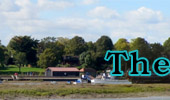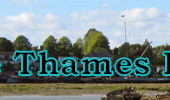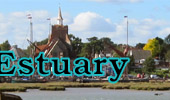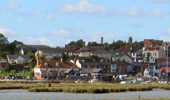| |

|
Pytheas of Massalia (4th century BC)
Pytheas, the geographer, wished to gain more tangible knowledge of the unknown northern regions. He lived in Massalia, a Greek settlement in southern France (now Marseille). And he discovered that when the sun followed its northern path the days would become longer, since the earth tapers close to the poles. This way of thinking is geographic and, due to his calculations, Pytheas was able to conclude that the sun would not set around the longest day of the year, when one travels furthest north.
Pytheas, however, did not settle for theoretical calculations alone. He left on a northern journey, around 350 B.C., and headed for England and Scandinavia. After sailing from the Meditareanen Sea along the coasts of Portugal and Spain to Britanny, he crossed the Channel to Cornwall and descibed sailing around Britain. After a six days northward voyage from the Shetlands, he reached an island which he called "Thule" (propably Norway or perhaps Island), where the sun did not set for a short period of time during the summer.
"On the Ocean", his volume on conditions at the edge of his world has been lost but some fragments have been retold. Pytheas mentions an island called Thule in his account; this island was claimed to lie to the north of Britannia and at a distance of time that it took to complete a six-day voyage. We do not know where this island was located, but he does say that the sun was above the horizon 24 hours-a-day during a short period of time in the summer. The island must have been close to the Arctic Circle. Ultima Thule has thus become an expression for the far north. |















